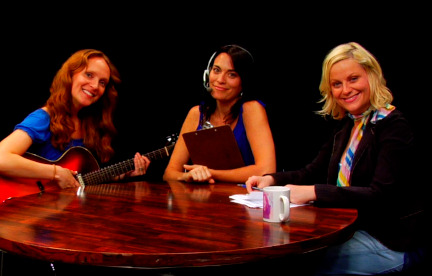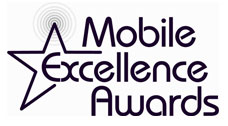This morning, Nokia announced it has just opened a Nokia Research Center in Hollywood, headed by Rebecca Allen, who founded the Design/Media Arts Department at UCLA and previously held positions a  senior research scientist at MIT Media Lab Europe and “3D visionary” at Virgin Interactive Entertainment.
senior research scientist at MIT Media Lab Europe and “3D visionary” at Virgin Interactive Entertainment.
Other universities and research centers that Nokia Research Center collaborates with include the Massachusetts Institute of Technology and Stanford University in the US, the University of Cambridge, UK and Tsinghua University, China.
MobilizedTV interviewed Allen about the mission of the NRC and its potential relationships with and impact on the Hollywood film/TV industry.
MobilizedTV: Tell us a little about your background and how that serves you in your new position with Nokia.
Rebecca Allen: I joined Nokia in July of this year. I’ve spent many years at UCLA where I founded the Design and Media Arts Dept. For another 30 years I have been involved in emerging technolgies, particularly related to media and, as an artist and designer. I approach new technologies through my interest as an artist and designer but am also involved in and have fairly good knowledge of the technology as well. My feeling is if you want to do something creative with new technologies, you have to dig in and understand the tools. The better you know your tools, the more innovative things you can do with them. I also taught from way back that it was going to be important to have artists involved with these new tech were and have some kind of impact and influence on them, which is what got me to dive into research labs.
For me, it was an ideal job description. It’s rare that I can utilize the different parts of my hybrid background, and they were looking for someone with strong academic background in LA and with long-time experience working with media technologies in a research context. And they also wanted someone who was connected to the Hollywood community and that was something I felt comfortable with. And someone with a design background, or some knowledge of the design side. It is so rare to see a job description looking for these multi-disciplinary parts and exciting that I could bring experience to all these different areas.
MTV: What will the research center be doing? What’s your mandate?
RA: Our general mission is to look at what is unique about mobile media and where it might go in the future. Another nice thing, being in research, we’re able to be disruptive- to throw out new ideas and see if we can bring in innovation into the company. One focus we’ll have is “augmented reality.” What is important to me about the mobile space is that it takes us out into the physical world. It’s different from being locked up in a room staring at a monitor, be it a theater screen, TV screen or computer monitor.
With mobile, we’re allowed to be mobile–out in public places in the physical world. How can we have interesting and engaging entertainment using mobile? How can mobile entertainment be different from other entertainment we know? One thing we take advantage is the abilities of mobile devices such as GPS technologies. One idea might be a game where you play the game by going to different physical locations. You can connect that to social networking. We can use mobile devices’ cameras and GPS to, for example, take a picture of a building, have the computer can recognize the building and, in a game situation, it might be a clue.
I can also look at my display and see a virtual object that will give me a clue about where to go next. This is part of the mixed-reality technology where the computer is identifying some object in this space. Once the computer realizes it, it can bring up a fantasy object. The virtual objects or characters are clues that only appear when you’re at a certain location, or if you’re pointing your camera at a certain object. These are all ways to build up the augmented reality experience.
Another big area will be looking at new user interfaces, which is very exciting for me too – I’ve done a lot of work with human bodies, human motion, non-verbal communication. The idea of looking of this for more natural forms of interaction will also be an interesting area for us. When we’re out in the physical world, having a keyboard and mouse don’t make sense so exploring further the interfaces will make that particularly interesting.
MTV: Who are your Hollywood industry partners? How will you be working together?
RA: We haven’t announced Hollywood partners. I’ve been spending a chunk of my time talking to people. In the Los Angeles area, there are numerous interesting groups that look at technology tied in with media, often associated with media companies. We’re looking, in some cases, to collaborate with these media technology companies or even with a company generating media and interested in moving into the mobile space. We’re talking to some people and will talk to more who could be potential collaborators. Also, we’re looking at creative talent in the media industry. In my history, I’ve worked with talented artists who have always wanted to work with new technology, thinking about new ideas for mobile space. But we can’t announce anyone at this point.
Even in research, which is thought of very engineering/technology-focused. it’s crucial in these areas that you have strong creative design input all along the way from the beginning of your research. I’m comfortable with mixing these cultures; I’m a hybrid of these different cultures. This is why it’s important that we’re bringing in creative input from the beginning.
MTV: What would this look like?
RA: One thing I’d like to do is form a nice community of forward thinkers in Los Angeles. I’d like to organize a workshop or set of presentations for people to discuss new ideas. We’re in research, and part of our mandate is also to look farther out, where this will go, what will happen in five years in this space.
MTV: Will you work with the studios or bigger Hollywood institutions?
RA: I’m sure we’ll be connecting. I’m familiar with people at the studios. Even within the Hollywood environment, there are smaller compnies working with the Hollywood studios. I’d like to take advantge of that, to have some interaction with the larger studios but also a lot of work goes on in these smaller businesses. They’re often set up to look to the future. To be able to think and play with these new technologies, I’ll be looking at different-sized industries. Of course we’ll have the relationshp that’s started now with UCLA and USC.
MTV: What will be happening at the research center? What can we expect to see from it in the near future? Will this be open to the public or behind closed doors?
RA: I”m looking to have both public and behind-the-scenes. One nice quality of that in some of our research with the university, it’s intensively open to the public as well as research the university can share with other groups. And there will also be more proprietary work we’ll be doing that will specifically benefit Nokia that I won’t be able to reveal. We see a balance between those sides. By opening up some of the research areas, Nokia believes, it’ll help the whole field move forward. The feeling is that it’s good to keep innovation open to drive the future.
MTV: Where is the center? How many people are or will be staffing it?
RA: We’ve got a location now in Santa Monica where we plan to be for about a year. We’re also looking at a permanent location. Usually Nokia Research Labs are located close to a campus we’re involved with, but since we’re invovled with two campuses, we wanted to make sure we were central to them and a lot of media going on.
We should be at about 20 people, but we also have interns and visitors which will bring it up to probably 30 people . We’re getting staffed up, we’re actually hiring now. I’m looking for people who would come from both a user interface design, user experience and be knowledgeable about the technology and various areas of technology and development.









